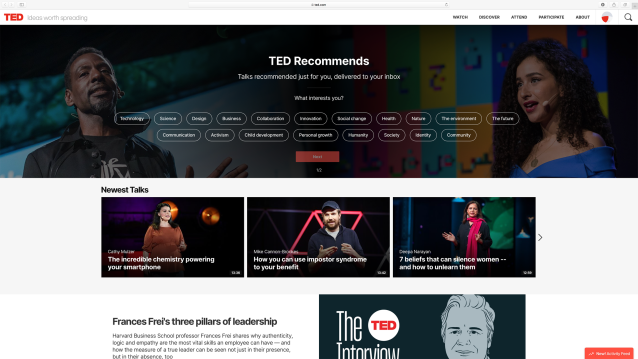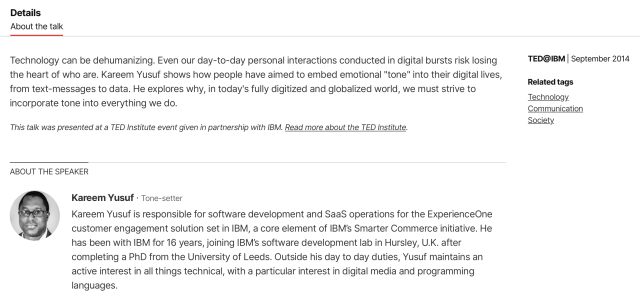In the past, I’ve casually watched some TED Talks over at YouTube. But for the current Contextual Studies module, having a TED account should make research far less frustrating, and perhaps, even fun!

I’m going to personalise my account and let the site know what interests me, to garner a tailored feed of information. This is an advantage over my YouTube account, which is cluttered with other interests.
Thinking about the module – though I’m unsure of the topic I’ll choose just yet – I decided to punch ‘communication’ into the search box as communication is very important to me. I am genuinely invested in keeping in contact with others – especially through writing letters. I’m wary of miscommunication, whether the communication be in person, by written letter, over the phone, and so on, despite the expectation and inevitability of misunderstandings.

This search results stuck me of interest because I often worry about my ‘tone of voice’ over text and e-mail particularly – and both of these forms of communication are needed to keep up both personal and professional contacts.

The site’s videos each have detailed written information on the talk’s topic and the speaker. Many videos on the site have an audio transcription, and that makes quoting the speakers much faster and easier.
Of course my fellow peers are encouraged to use this website as a resource, but I would also encourage anyone who is interested in broadening their knowledge in their fields of interest. There’ll even be something for you!